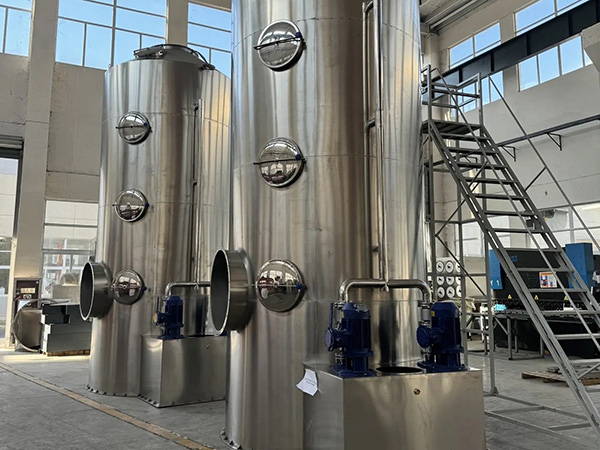-
All
-
bag Dust Collector
-
Electrostatic Precipitator
-
Cartridge Dust Collector
-
Desulfurization And Denitrification Equipment
-
Dust Collector Bag
-
Dust Collector Skeleton
-
Electromagnetic Pulse Valve
-
Rotary Valve
-
Screw Conveyor
-
Dust Conditioner
-
Plug Valve/Butterfly Valve
-
Scraper Conveyor
-
Catalytic Oxidizer
-
Cyclone Dust Collector
-
Sintered Plate Dust Collector
-
Spray Tower
-
Activated Carbon Adsorber
-
Light Oxygen Purifier
-
Dry Filter Box
-
Bucket Elevator

Stainless Steel Spray Tower
The main materials for stainless steel spray towers are 304 or 316 stainless steel, which have good corrosion resistance and can meet the treatment needs of acidic or alkaline waste...
The main materials for stainless steel spray towers are 304 or 316 stainless steel, which have good corrosion resistance and can meet the treatment needs of acidic or alkaline waste gases. Compared with traditional fiberglass or plastic spray towers, stainless steel materials are less prone to aging or deformation during long-term use, especially exhibiting greater stability in high temperature or high humidity environments. The surface of stainless steel is smooth and not prone to scaling, reducing the frequency of cleaning and maintenance.
Stainless steel spray towers usually adopt modular design, which is convenient for transportation and on-site installation. Its internal structure includes spray layer, packing layer, defogger and other parts. When the exhaust gas passes through the tower, it fully contacts with the spray liquid to achieve purification effect. Compared with ordinary spray towers, the internal structure of stainless steel spray towers pays more attention to the uniformity of airflow distribution, thereby improving the efficiency of exhaust gas treatment. Part of the design also includes an adjustable spray system that can adjust the spray amount according to the concentration of exhaust gas, reducing water waste.
Stainless steel spray towers are suitable for the treatment of various industrial waste gases, such as acidic gases (hydrogen chloride, hydrogen sulfide, etc.), alkaline gases (ammonia, etc.), and some organic waste gases. Compared with technologies such as activated carbon adsorption or catalytic combustion, spray towers are more suitable for treating high concentration and high flow exhaust gases, and have lower operating costs. However, for low concentration or deeply treated exhaust gases, it may be necessary to combine them with other technologies.
The stainless steel spray tower mainly purifies exhaust gas through physical absorption and chemical reactions during operation, without generating secondary pollution. Some designs also incorporate a circulating water system to reduce wastewater discharge. Compared with dry dust removal equipment, spray towers have higher energy efficiency in treating certain specific exhaust gases, but attention should be paid to water resource consumption.







